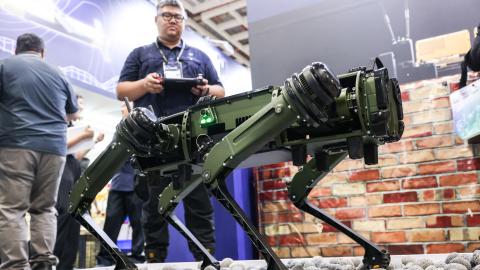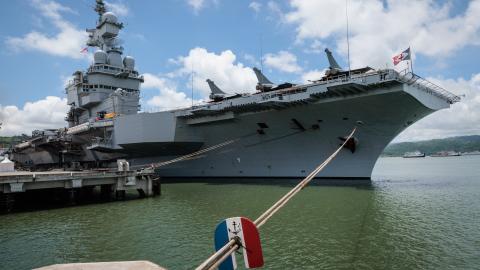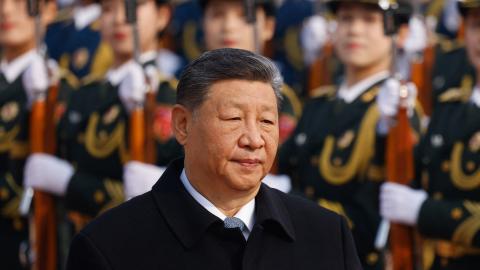
Defense Disruptors: A Conversation with General Christopher Mahoney
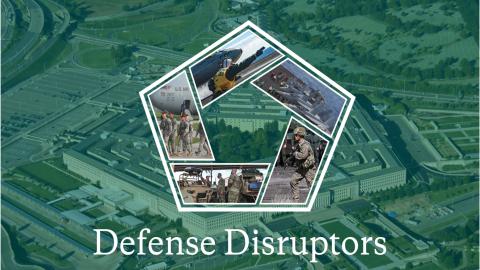
Assistant Commandant of the United States Marine Corps

Senior Fellow and Director, Center for Defense Concepts and Technology
Bryan Clark is a senior fellow at Hudson Institute. He is an expert in naval operations, electronic warfare, autonomous systems, military competitions, and wargaming.
For more than 200 years, the United States Marine Corps has been America’s “911 force”—the service that is always ready to respond to crises and conflicts in every theater. The USMC is constantly evolving to exploit new concepts and technologies, and now employs advanced missiles and artillery alongside unmanned systems, artificial intelligence, and cyber and electronic warfare. But even as they transform for the future, Marines are called upon to protect US allies and citizens in conflicts across the Middle East and Africa and to deter further aggression in Europe.
Please join Hudson Institute Senior Fellows Bryan Clark and Dan Patt for a conversation with General Chris Mahoney, assistant commandant of the Marine Corps, about the future of the USMC in a world of increasing competition and confrontation.
Event Transcript
This transcription is automatically generated and edited lightly for accuracy. Please excuse any errors.
Bryan Clark:
Well, welcome to the Hudson Institute. I'm Brian Clark, I'm a Senior Fellow here at the Institute and Director of the Hudson Center for Defense Concepts and Technology. I'm here with Dr. Dan Pat, Senior Fellow at Hudson, and we are honored today to have with us General Chris Mahoney, who is the Assistant Commandant of the Marine Corps, as well as I guess the Acting Commandant as well right now, to have a little discussion about the future of the Marine Corps and how things are going as we enter into this year's budget cycle. General Mahoney is a native of South Weymouth, Massachusetts and graduated from the University of Holy Cross. Also, he is a career aviator, commanded every level in the Marine Corps, as you'd expect, and comes to his current position in part out of the programs and requirements world. So we'll get to talk a little bit about fiscal matters, as well as kind of the future conceptual and infostructure direction of the Marine Corps. So General Mahoney, thank you very much for being here.
General Mahoney:
You bet, it's a pleasure.
Bryan Clark:
So to kind of open up, I want to start with one of the big topics currently in the Marine Corps, a budget I'm sure will be Force Design 2030, implementation of this transformational change to how the marines both are equipped, as well as how they intend to operate. We have fielded Marine Littoral Regiment, they are Stand-In forces being implemented now so it seems like it's well underway. How is progress going on that and what do you see as some of the challenges as we go into this budget cycle?
General Mahoney:
Let me just start by saying change is easy. You come in, you declare, you write a white paper and it's done. Now in all seriousness, the journey toward Force Design reaches all the way back to Hunter Warrior, to Urban Warrior, back decades in fact. We are kind of getting away from the 2030 moniker, I think that was a pretty good way point to throw out there at first, but we've been through six budget cycles of organizational change, of functional change, and structural change. Those decisions have been made, and as you alluded to, we're moving out on those. The beauty of the structure of Force Design is that right up front it said the concept is a little different, or depending on how you look at it, very much different, but challenge the assumptions along the way, we made a lot of assumptions.
We made changes based on those assumptions, and we are going into a refinement process to challenge them, which I think is the beauty of it. However, through those budget cycles, through those changes, we have put MLRs in the field. A third MLR that has trained in conus and done very well, that has trained with our partners and allies, and I'll get back to that in a minute. 12th MLR has been re-designated from 12th Marines and they'll be IOC planned in 2025, and 4th MLR is on schedule to be IOC planned in 2027. So those elements of Force Design are moving along per the plan. The assumptions and the functions inside those MLRs, we're challenging daily. In the military, we got to have acronyms for everything. So across the DOTMLPFC continuum, we are having little feedback loops that see how we operate within that concept and how we get better.
I'll say the concept has been validated through war games, through TTXs, and through live training. And I'll go back to touch on our allies and partners here. They see the value in that concept as well. The Koreans, the Japanese, the Phils, the Australians for example. So they are coming along with us on this concept of standing in, of being able to see sense, describe, understand, and then either offboard that to organic effects or offboard it to, in our case, fleet action or joint effects.
I say we dropped the 2030 because once again, that was a way point. Force Design I think if you look back, at least at the history of the Marine Corps as a continuum, we don't drop the mic and walk off stage at 2030 because we're done. The security situation will change, new technology will be introduced, other changes will happen underfoot that we will have to continually refine once again our assumptions and the things that go into Force Design. A lot of people forget that modernization was one pillar of Force Design, but there are two others at it's initial instance and we've added another. The two other ones were talent management and training and education. And since then, at the end of his tenure and the beginning of General Smith's, we brought in installations and logistics to round out the pillars of a design framework that will propel us toward 2030, allow us to iterate toward years beyond that.
So what I like the crowd to remember is that modernization is a pillar, that talent management, keeping the right marines in the right place for the right reasons longer, if you will, and educating them to the point where they can operate in this new concept is the three major pillars. And then of course installations and logistics kind of self-defining there, and that's an area where over time, for the right reasons, we've made decisions not to invest in installations and logistics because we were doing other things like fighting, and over that time have incurred initially risk then debt, and then a debt position where we need to refocus on that to lessen that debt, get us out, and have a logistics position and an installations foundation that is befitting of quality of life for marines and is befitting of generating a force and projecting power from. And I'll stop there if there's a follow up.
Dan Patt:
Yeah, if I may? Look, You sort of led with this change is hard thing. As we think about this, obviously Force Design 2030, as we have known it, has been polarizing. People care deeply about this issue and people engage with this issue. So if change is hard, when we look back, and there are of course many stories of military change through history, the Force Design change is a bet on things being different, and we look at things like if it's the end of horse calvary or if it's a bet on something like the Maginot Line, sometimes we're right and sometimes we're wrong. You talked about validating this, you talked about validating with war games and exercises. How do you know you're validating against the right assumptions? How do you think about that? When you look at is Force Design working, you carry assumptions with you, can you explain how we know that the Marine Corps is going in the right direction?
General Mahoney:
Well, I think I'll go back to the idea, the concept, the model, prototypes, experimenting, exercising and putting into the field, when you add that continuum up, you'll come to conclusions along the way, refine and reform to get to the point where that body of evidence suggests that the concept put in the field is doing the right thing. And so far that feedback for the concept has been right. Some of the things that we need to refine are did we get the critical MLSs right? Did we get the structure that supports those MLSs right? Did we get the logistics support right? Did we get, as we discussed before we came in here, the integration of those capabilities, right? But I think it's a compendium of evidence that suggests that the concept is absolutely valid. And also I will go back to where I started... I didn't start, I'll go back to mentioning the allies and partners who also believe that the concept is correct and in one way or another are partnering with us. I don't know if that scratches the itch.
Dan Patt:
Yeah, I think so.
Bryan Clark:
So the idea of Stand-In force, you just talked a little bit about allies and partners and the role that they play and the role that the Stand-In force plays, obviously allies and partners don't have the luxury of coming back to the US and being somewhat divorced from the confrontation. So Australia, the Philippines, Japan, they all have to be in the fight, this is the same thing that's true of countries in Eastern Europe. So the Stand-In force, is that also a way for us to show resolve and solidarity with those allies that are otherwise stuck in the theater regardless?
General Mahoney:
I think it absolutely does. Virtual presence is absolute absence. You have to be there shoulder to shoulder with them physically in one way or another and you have to show them that you'll share the burden of security, bleed the burden in some cases, and that it's not something that they will be encumbered with on their own. I think absolutely to persist and exist as a Stand-In force, and the Stand-In force is not a thing, it's how you do it, is absolutely critical in the wider proposition of allies and partners.
Bryan Clark:
And are they part of the effort at campaigning that? If we're trying to shape the theater, shape the mindset of our opponent in ways that are supportive of our objectives, is the Stand-In force concept, is that partly intended to kind of shape that?
General Mahoney:
So yes. If we have partners that believe in the concept or maybe doing design changes, structural changes, organizational changes of their own, we're exercising alongside them to validate along that and build a body of evidence, and we have to do that. If you look at Marine Rotational Force-Darwin, if you look at the EDCA sites and the MDB-SEB, again more acronyms, training with the Philippines, certainly treaty allies in Japan, treaty allies in Korea where we have a regular battle rhythm of exercises that have a coherence and a campaign aspect to them so that they're not just there to burn fuel or eat food, they're showing a level of solidarity, they're showing a level of capability, and they're there.
Bryan Clark:
Then one last thing. So Taiwan is part of this too, the Marines are doing training with Taiwanese military, well, from the press reports I've seen. Is that the case and is that seen as kind of a longer term component of campaigning as well?
General Mahoney:
Well, we exercise in accordance with the Taiwan Relations Act. So as long as there are accommodations to do exchanges, we do that, so that is part of the calculus as well.
Dan Patt:
In your points about Force Design, you have this emphasis on adaptation, this emphasis on learning as you go, and maybe looking back at some of the early assumptions, and these have changed. You've tried to focus on, it's not really even just 2030, we're going to have to continue to evolve. What does it take to drive the culture in the Marine Corps to embrace this? Is this a natural thing? One of the things you talked about, six budget cycles. Budget cycles are intended to create some stability so I can know what I'm going to train to, and I can know what I'm going to buy. How am I balancing this?
General Mahoney:
Budget cycles are great if you actually get a budget and not a series of resolutions that cash flow you to a business plan that is somewhat old, but I'll stop there. The change, I think, and if you look at the strata of people, the strata of the organization that are either accepting of change, we're somewhat resistant to it. Old folks like me are reflexively against something that will change the things that I've done for 36 years. The middle strata is kind of, "Hey, I'm trying to get good at this, why would I change?" But I think we have a building cohort of younger marines, both officer and enlisted, who are all about it, who from the day they put their first iPhone in their hand, embrace the technology, embrace the change, and are really the ones who are going to lead us beyond 2030 and 2035. But there is an innate or reflexive resistance to doing things differently than you've done it, in my case for 36 years.
Dan Patt:
So maybe we can just jump from there then into how do we think about experimentation? We talk about the design of an operational concept at a very high level with Force Design 2030, but how does this meet with the junior officer or the enlisted marine, and how are they experiencing this change of their TTPs, this insertion of technology into the way they fight?
General Mahoney:
Once again, I think the younger Marines, I'm not sure where I delineate where that strata starts and stops, but we put them into end user evaluations, we put them into experimenting with ACV or with long range fires or any manner of things, and that's how we figure out what is going to work practically, what is not going to work, and they were like an idea factory. Things that engineers or PhDs didn't figure out, a young corporal or sergeant will suggest and go forward. So I think while there may be an innate and reflexive rejection at some levels, there is equally an innate and reflexive acceptance of the experimentation nature of moving forward and bringing new ideas into the fight.
Bryan Clark:
And that kind of implies that, we talked earlier about integration, about the importance of integration because if we are going to bring new capabilities to bear and put those in the hands of war fighters, the challenge will always be do they communicate with each other? Is there a way for an operator actually to build a COA and manage the operation over time? And then are we sustaining those, is there a way to keep those in theater or maintain them with the force? So integration in a lot of ways seems to be the heart of innovation today because there's so many new technologies available. How is the Marine Corps approaching this challenge of rapidly integrating these new capabilities with our units such as the MLRs so they're viable capabilities and not just science projects?
General Mahoney:
Some people say amateurs talk tactics, experts talk logistics, people who think at the PhD level talk about integration. If you have something that works and works well, and has a demonstrated effect, and has the technological edge that we need, if you cannot build that into a training continuum, if you cannot build that into a logistics support and sustainment continuum, if you cannot get that into the field and maintain it, then eventually it will break and break down. I've spent some time in the counter IED world and there were tremendous technologies that came aboard, and they had a great effect and I believe that they saved a lot of people. What we didn't do very well though was integrate those technologies into that progression that I just discussed, and so eventually it will break, it will either be cast aside, or at least be sub optimized. In the case of Marines, it may even become unsafe.
Bryan Clark:
And what we see with Ukraine, that gets a lot of people excited, the technologies that are being rapidly developed and displayed on Ukraine, but when you talk to Ukrainian soldiers or the defense minister who was here a couple of months ago, they say, "Well, that's great, but we don't expect any of that stuff to last more than a month, and basically we're onto the next thing within a few weeks." So sustainment, integration, none of that is really a high priority, but I think obviously for our military, we need to have that integration. The expectation is we put something out there, it's probably going to be out there for years even if we don't think it will be.
General Mahoney:
So we'll call it the Ukrainian Maxim of where you use something to the edge of its usefulness and then you got to move on to something, and then for them it may be a matter of survival or prolonging a fight against a big adversary. We have to be able to do that to a certain extent as well. There are things that we will bring on that we will run through a DOTMLPF integration cycle that will be around for a long time, but we also have to have the agility and the flexibility to run that cycle at speeds that keep up with the effect that we want, the system that we want, and the technology that's available to do it. I wish I could say that we had achieved that speed, I think I'm speaking for the Marine Corps but probably to the wider enterprise that we must get faster. And there's a bureaucracy out there that kind of retard some of that but there are ideas that are trying to push it forward faster. Replicator, we touched on that, it's everything to everybody, it's nothing to some people. I look at it as an opportunity to change the way we think about bringing things aboard and then getting them out to the user and getting them integrated.
Dan Patt:
Look, the Marine Corps has always had these structural advantages around integration, we have a thing like a MAGTF that's inherently integrated and allows you to go after some of this, but it feels like so many of our challenges are new levels of integration. The Marine Corps has always worked with allies and partners and always worked with the other services, but now we're really thinking about a deeper level of integration with allies and partners in the Pacific, including technological integration. Things like sharing targeting data, or there's a really unique role for the Marine Corps with the larger joint force, which is going to include things like low latency transmission of targeting data or passing off target nominations, this new technical layer, which applies all of these dependencies, do things have to change about either the Marine Corps or the joint force to enable this richer, deeper integration that we contemplate with these operational concepts?
General Mahoney:
Yeah, I'll see if I can get at that, big thoughts. We are awash in information in the enterprise, in the naval force, in the Marine Corps, but we thirst for the information that we need at the time and place that we need it. There are more networks out there than probably a Cray computer can count. There needs to be unification of a network concept and there needs to be a change in the way we think about hardware. So that hardware is just is, and it's the software that drives the hardware, not the hardware that drives the software so that we have a mesh capability where anyone can interface due to their software irrespective of the iPhone that they're on or the machine that they're on. It's not software dependent because of the hardware, the software drives it.
That will, I think, solve some of the clarity issue but that has to be enterprise wide. The example that I'll give is if you have a TPS-80 out there, tremendous sensor in a number of different modes, traditional and otherwise, that can send a ton of information. That information is not rationalized yet. It needs to be computed, it needs to be analyzed, and if you have something like a targeting cell that can do that and combine it with intelligence information, and then offload that to the fleet or offload that at the same time to a cloud environment where the fleet can take it, Admiral Aquilino can take it, anybody can take it as long as you have the permissions and authorities. So it's a mesh sort of approach where you start with a sensor, the sensor derives information, the information is analyzed and computed, and then it is out there to be pulled in from whatever, I don't even want to say node, from whatever environment that you're in. Does that get at it? I might've strayed a little bit.
Dan Patt:
It does. No, no, it does but when you get into that, it sort of makes this question of what does this change about training for Marine or how I have to think as a marine? You've just described a whole bunch of competencies and data savviness that didn't exist 20 years ago.
General Mahoney:
Great question or great comment. The training and education portion of Force Design, there will always be a place for brick and mortar schoolhouses, there'll always be a place for a little bit of PowerPoint and pick two out of three, but where we are going in three parts, and I'll see if I can get this right, is agile thinking on the part of a young, smart Marine who knows that that information is not useful yet but knows how to network it to the place where it can be computed and analyzed. So agile thinking, thinking through or around an obstacle or through a problem, applying that agility of thought to operating within the environment that we just talked about, kill webs, kill meshes, and then providing them the training environment, live, virtual, or constructive, in order to do that. So if you take that training and education continuum and crush it down, you've got the individual, you've got the processes and methods, and you've got the environment. So out the right side comes an effect or a capability that you desire, and that is what we're after. We got to put a name to everything, Triumph, Trident, and Tripoli are the three programs that we're concentrating on. Not easy, not easy to get away from the professor in the front of the room with 200 PowerPoint slides.
Bryan Clark:
So there's a great kind of real world example of what's going on in terms of information with the Baltic Air Policing mission where we've got the G/ATOR radar being used to support that, and marines are up there doing that kind of unusual operation up in the Baltic States, I think the radar's actually in Lithuania, but are you having to field with these units, software writers, are we having to get Marines trained to be software writers so they can go support creating that data fabric or making that data fabric aligned like Dan...
General Mahoney:
That is a great example. That original sensor was in the high north, moved within 24 hours by the way to right up in Mr. Putin's grill. Started spinning and started giving its information to the wider EUCOM Air Coop. It probably was not just plug it in and turn to Channel Marine, and you can see this. Let me go to a contemporaneous example in Djibouti where that same sensor with its CAC2S system backing it up is integrated with Patriot, is integrated with firing units of other types, and integrated with maritime assets that are off the coast and the Red Sea. Once again, I wish I could say that we plugged it in and it worked like a champ, but the application program interfaces need to be more broad and more accommodating.
I'm under no illusion that we'll ever probably get to the CAT5 cable goes in and everything fires up but that is a vision to go for but the interfaces are more broad to accept a TPS-80 showing up and talking to a Patriot's ATC or talking to a firing unit. But that's happening time now. So go back to the education of Marines. Who do you think made that happen? Was it a PhD in a lab in Los Alamos? Probably not. It was probably a corporal or a sergeant wire dog who knows how the network works and knows how to make that interface happen. Let's get beyond that to where that young marine can think about different problems and we can plug the CAT5 cable.
Bryan Clark:
And that goes back to a change the Marines made even before the Force Design effort right now, started with the establishment of the DCI, The Deputy Commandant for Innovation, Urban Innovation Information, the MCDP 8 for information, and reestablishing the Marine's electronic warfare capabilities. Is that an important part of the Stand-In force and what's happening with the marines today, is this idea of reconnaissance and counter reconnaissance?
General Mahoney:
Absolutely. One of the tenets of the Stand-In force is that it's on the forward edge, that it can be that sentinel, it can be that Ford observer that can see, sense, understand. Once again describe is important, description may happen back where that information goes for computing and analysis, but the establishment of DCI and some of the smaller agencies below it have allowed us to herd the cats first of all, put some formality to an ungoverned space of information, and get us moving forward. Moving forward, what do I mean by that? What I mean by that is network unification, what I mean by that is less vulnerability to adversary type of intrusions, what I mean by that is a Marine Corps cyber operations center that is man trained and equipped to keep the network running, whether it's in conus or push those capabilities out to the forward edge, operate it, defend it, and secure it.
Dan Patt:
So implied by this, so we just talked about campaigning with an inside force, right? Reconnaissance and counter recon, this learning, how we're understanding, how we're shaping, how it's a not today, and tomorrow we're better postured than we were yesterday. How do I contrast or trade off the priorities between running this campaigning and being ready for a contingency, which is maybe something happens and I have to put boots ashore? Aren't there trade-offs in Force Design, aren't there trade-offs in resourcing, and how do you manage those two things?
General Mahoney:
Well, I think in general, anytime you change something, unless you have a hermetically sealed solution, there's going to be a trade. Whether it's a programmatic trade of fiscal trade, a structural trade, an organizational change, and we made, as I kind of started with, we've made those decisions. But what you have to do in my mind is once you've made the trades and the smoke clears, you have to look at the balance. Something of low probability but high consequence, what's our answer to that? Something that is, "Hey look, we have to be the crisis response force." And you have to balance that and there are trades that need to be made. If we go back to the description that I gave someone inaptly of Force Design, changes, decisions made, refinements required, but there are a lot of things that didn't change in order to keep that balance.
And maybe an example I'll give is the 26th MEU right now aboard Baton, Mesa Verde, and Carter Hall over there in the Mediterranean working for Chris Cavalli. A couple of weeks ago, they were working for Chris Cavalli and they were working for Eric Carell in two different COCOMs enabled by our great shipmates and partners in the United States Navy with ready and trained crews. So that hasn't changed. Formulaically it has changed in their lethality, has changed in the capability that they bring aboard, but that to me is part of the balance. We talked about the force that we put forward in Mike Langley's AO in Djibouti. There are Marines right now in the high North that are training, and once again on the new 800-mile frontier with Russia that Mr. Putin caused with Finland, they're training with the Norwegians of Swedes and the Fins. So as much as there is organizational change or structural change, there's a lot that keeps us in balance with campaigning and with crisis response, and I'll just once again offer those real examples.
Bryan Clark:
One way to frame that is Marine Corps is being used as a hedge in a lot of cases by the department to hedge against these maybe high consequence-low probability, high consequence-medium probability scenarios like the Stand-In force and its ability to drive down risk associated with aggression in the Western Pacific, what's going on with the forces that are up in the high north along that Stand-In force that's along the border with Russia to guard against a potential Russia action, and then the forces at sea that are responding to potential crises like we see in the Middle East. It seems like we've always relied on the Marines to be that hedge and the fact that they've had to evolve, it's just reflective of the fact the environment's change.
General Mahoney:
I might choose a different word, but your explication is right on. The leading edge of a campaign in littorals, the leading edge of crisis response equates to a hedge, if you will, and that has been in our DNA for a very, very long time. We task organize our capabilities, we task organize our units in order to be able to answer those questions which amount to options and decision space for a local commander, for a COCOM, and ultimately for the National Command Authority, so I agree with you.
Bryan Clark:
And so thinking about that, the idea of the Marine Corps still has to be able to do a lot of the crisis response operations that it's been traditionally relied to do, just like the 26th MEU is doing, where do we need to go with the amphibious fleet? That's obviously an area of discussion between the Navy, and OSD, and then the Congress of course.
General Mahoney:
Well and statutorily, it is a conversation in my acting capacity with me. They're statutorily 31 amphibious ships, the characterization of those being 21 LPD class, 10 LHA class, I'll add onto that and we can rip the top off of the LSM, where our objective number is 31. Add to that connectors and that is what we're working with with the Navy and the long range shipbuilding plan. Excuse me, dive a little deeper into there, there are issues not only for the amphibious fleet but for the wider fleet of maintenance. There are issues of how we procure those ships. For us, we would like to see LPDs on two year centers, we'd like to see LHAs on four year centers, and we'd like to see it in certain years so that we can recapitalize on the LHDs and LHAs that were bought some 20 or 30 years ago. That is a deeper dive into it, and I'm happy to say that Admiral Franchetti is all about it. She wants more players on the field, and we're going to help as we can, but at some point it's an SEN account that we have very little control over.
Dan Patt:
Let me just get back into this budget build and resourcing piece of this story. So as we drive change, our budget build process starts with what we have today. We forward project that, what are the units, what are the equipments I have? Do I need new versions of this? To drive change, it implies that I have to look at some of those must pay bills that are implied by my force today and say some of that has to go away, I have to take some divestment. But some of the things we're talking about in future Force Design are new integrations and it's about campaigning or things that aren't a clear drop-in replacement for the old force, and there's more uncertainty. How do you manage the resourcing process to make room, to make a wedge for this kind of change in the face of so much uncertainty?
General Mahoney:
Don't say wedge. From my P&R days, that's that's a bad word. But the bottom line is we need consistent and predictable funding to support a program that we took a long time building and a plan that we took a long time to support the program. If we don't have that, you're operating in the past, no new starts, no quantity increases. You can't even let a new contract unless there are anomalies or other rules. So that bureaucratic structure in and of itself, although it is really good for checks and balances, to get the watchman to watch the watchman, to check the homework of the guy who's checking the homework, it's really good. It is inherently slow, so the things that you're talking about in time are threatened and also if you have a planning factor and a resource level that doesn't necessarily keep up with inflation, you you're at a purchasing power deficit.
And if you don't have an increase above your nominal top line, how do you insert new things in the middle of a divestment? Now in starting Force Design, we took some risk with divesting, with getting rid of some capabilities, knowing that that money in motion might've been money at risk due to the good graces of the department who saw the direction that we were going and supported due to our oversight folks not only the authorizes, but the appropriators agreed with us so we were able to pull out an excess of $18 billion and be able to plow almost $16 billion back in but that was a risk. But people supported it, they believed in the concept, and off we went. It is a risk and it is a potential trade where you might lose.
Dan Patt:
So one area where I think-
General Mahoney:
I don't know if I hit what you were asking.
Dan Patt:
Yeah, I think so. Maybe one follow up on that, which is the, you talked about this, the things that have to change quickly. How are you managing the budget process, the planning process around these things that you know have to change quickly? I can't draw the same Gantt chart, I can't put all of this on two year centers or four year centers and plan it all out. I know I have the right concept, I have the right people, but there's no Gantt chart for it. How do I deal with resourcing around that?
General Mahoney:
It's difficult and in some cases you can't. You can move money between appropriations very rapidly and programming, it's got to be checked, it's got to be approved. Once you get into an execution, a one or two year execution phase, there are below threshold rules to move money around and they're above threshold rules, and that takes time and sometimes it's not, it's not approved, but that connotes that you have a plan to execute on that dollar, on that dime. I don't know of a practical way in my late experience in P&R to insert an unknown cycle of development that is not defined in of a fiscal position, that is not defined from a programmatic delivery. It's very difficult to convince people to take that bet.
We had a discussion about venture capital and startups. The level of venture capital startups now is the same as it was in 2010 because it's so doggone hard for them to get through the process that I just tangentially described. Now, I'll go back to replicator. Once again, a bad word to some people, I don't understand it to others. To me, it is an opportunity to get after some of that. We have equities in replicator that I believe the focus that the DepSecDef has put on this and the pressure and the authorities brought in to it will accelerate the cycle. Now that's down and in, right? Marine Corps get your act together. You said that these four things are important to you. Programmatically, you better be ready to go. You better not be false advertising at TRL level. And the flip side of A TRL to me is integration readiness level that we talked about. That's down and in. Okay, so we got to do our work.
Up and out, we got to make good with industry. You can't be like Lucy pulling the football away from Charlie Brown. You have to get their commitment, and make your commitment, and move out. And to me, a replicator is an opportunity to do just that. And once again, at the department level, if Dr. Hicks is the head programmer for the department, she's putting what I consider positive pressure on this, and guys like DIU, like Doug Beck are pushing hard too. So to the extent that that is an accelerator, we shall see, but I think there's real, real opportunity there.
Bryan Clark:
Aditi Kumar was here yesterday from DIU and she was talking about replicator, and to kind of draw that thread a little bit, one of the challenges she identified was once you have these systems that you're going to put in the field, you have to have a partner that's able to actually deploy them, sustain them, maintain them, be responsible for them. It seems like based on the kinds of systems they're talking about, small attritable systems or just attritable systems in some cases, maybe they're not that small. It seems like the Marines and Stand-In force, the MLRs might be a natural partner for the kind of replicator capabilities we're talking about.
General Mahoney:
And yes, and the capabilities that we have equities in, absolutely. And to your point, I think what you described is in another way, probably a better way, is integration in the right place at the right time and a persistence to it. You buy something that comes in a box and you put the box down and the theory of the case is you hit your remote, the box opens, this thing goes and does it. We all know that that may be the vision, that is almost always absolutely not true. The box can't convey itself to where it's going necessarily, when it's there it probably can't maintain itself if it gets rained on. It can't, although we're working on it, automatically upgrade it software. So there's a commitment and an integration that needs to go on with the people who have bought into the equities. That's the hard part, the harder part.
Bryan Clark:
Right, right. I want to alert the audience. We're going to take some questions from the audience, so if you have questions, think of those and then we'll have people come around with the microphone. But while we're waiting to do that, you brought up the LSM-
General Mahoney:
Fire away.
Bryan Clark:
And I'm a Navy guy, so I wanted to ask about that. So there's been-
General Mahoney:
It can't submerge, so I don't know if you...
Bryan Clark:
Well, okay, all right, well then maybe my question's not relevant, although that would be a cool idea. So the LSM, the discussion in the Navy has been, well, we want this survivable platform that's going to make it through the wickets in NAVSEA, and I think the Marine Corps is looking for something that's a little more just as a conveyance to be able to get the Marines around, doesn't need to be super survivable. Where do we stand on that confrontation or that competition of ideas?
General Mahoney:
Yeah, we could start with a theoretical discussion about survivability. And I would offer that captain in Inoguchi when he went through the Surigao Sea in Musashi with 72,000 pounds of beautiful warship in World War 2, thought that he was survivable right up until the point where he had no air cover and airplanes from the enterprise showed up and pumped 17 torpedoes and 31 bombs into him and Inoguchi went down to the bottom of the sea with that very survivable platform. So my only suggestion here with the story is survivability is related to the doctrine, the TTPs, and the context with which you employ that piece of gear, and the amount of risk that you are willing to take.
So let's go to LSM. Where and under what conditions would we use it? Well, if it's before high-end fighting starts, then I would say the survivability is very great. If it is in conjunction with fleet action that is designed to protect consorts or protect communication of logistic shipping or console tankers, I would say it's very survivable. If it is one-on-one with a Renhai, I'd say it's probably not too survivable so I would offer that you're not going to take undue risk with any system, LSM included, but you've got to be able to move, maneuver, and sustain in the littorals, and that is part of the answer to that. People also might overlook the aviation part of that, whether it's V22, whether it is KC130, whether it's CH53K or autonomous logistics platforms that move through the air, or surface or subsurface, unmanned and autonomous logistics vehicle, which we're also pursuing and frankly are moving down the road fairly quickly.
Bryan Clark:
And we can talk a little bit more of that in a second, but I wanted to open up to the audience. So questions from the audience. I'm going to start with Megan there in the back. Oh, please state your name and affiliation.
Megan Eckstein:
Yes, Hi, Megan Eckstein with Defense News.
General Mahoney:
Hey Megan.
Megan Eckstein:
It sounds from talking to other Marine Corps leadership like the services trying to keep ready forces something closer to a 3.0 MEU presence, even though the Amphibious ships aren't available to keep 3.0 MEUs afloat at any given time. But I just wonder from your perspective, trying to keep those MEUs ready and available to deploy if needed, are you looking at any changes to training, any changes to force posture to accommodate that or do you think the way things are today is good enough that you could scramble forces forward if there was a crisis?
General Mahoney:
Well, I think you mentioned the 3.0, two, conus based MEU ARGS cycling off each coast and the persistent presence of the four deployed Naval Force 31st MEU and its patrol schedule out of Sasabo. That is probably not a practical eventuality right now, but what we will have is MEUs that are trained and ready to the extent that they can be to integrate with an ARG or to answer some other exigency or pressure that happens, and they may be conveyed by alternate means, they may be conveyed through the air. Not optimal and not what they were designed to do but if that is a predictable eventuality, we will change the training in order to make them first of all safe, but then confident and competent to go do what they're going to do. Megan, does that get after it?
Bryan Clark:
Next question in the back there ma'am. There we go.
Kathy Chu:
Hi, this is Kathy Chu with VOA. I have two questions for general. First one is so the Marines one of the few US mentor service that reach your recruiting goal in the past few years. So what makes the Marine stand out? What are the recruiting challenge you're facing and your strategy to overcome them? And will the commitment to DEI or some vaccine mandate distract you from readiness and recruiting more capable or patriotic war fighters? And second question is when comparing with the PLA, so China's Xi Jinping also emphasized building a world-class PLA and ready to fight and win obviously against USA. So in some people's eyes, the US military and PLA are basically just similar nature as a killing machine to defend each country's national interest and survival, but in terms of its essence, it's character, and its spirit, how is the US military different from CCP's PLA and what is your unique strength to be the PLA on the battlefield?
General Mahoney:
Well get after the first one. No, the second one is great. And that's not barroom talk. Maybe I'll hit the second one. Hey look, we're United States Marines, we're trained to a standard to locate, close with, and destroy if that's what is required, and we will do that. If our mission is to see sense, understand, and describe, we will do that too. We will Stand-In, we will be up in the PLA, the PLAN or anybody else's grill who needs it and where we've been told to go. But let me go back to the first one in recruiting, and it can be distilled down, I think to one notion, and that is we put our best people into our recruiting system.
Now we have a system that is time proven and very effective, but it's worthless without the right people who are selected, they are boarded, and then they were put into those jobs, they're incentivized on the front end, they're supported in the middle when getting better, and better, and better at that, and then they're supported when they come out from their recruiting duty. In fact, we find that our recruiters or some of our best officers and staff and CEOs when they return to the fleet due to they were good when they went in and they were even better with management, leadership, and solving problems when they come out. So that is, if there is secret sauce to our recruiting, that is one part.
The second part, and I've been going around to a few recruiting stations, when you ask someone, and this may not be unique to the Marine Corps, perhaps it is, when you ask them three times, why did you join the Marine Corps? Well, I joined because I wanted to be an infantryman. No, no, really, why'd you join? Well, I joined because I want to see the world and I want adventure. And you ask them the third time, they'll say, I don't know. And I'll include myself in this demographic. There's something about the United States Marine Corps, about its brand, about what it does that is indescribable, there's not a framework that you can put around it and then look it up in the dictionary, and that is probably the third why did you, and I think that is operative to the people we bring aboard in the Marine Corps, if that makes sense.
So there are practical reasons that might motivate someone, but you get right down to it, they want to wear the uniform, they want to be part of the brother and sisterhood and they want to go forward and do bad things to bad people if that's what they're asked to do. And I think I touched on your second question, never ever underestimate your adversary, but also know yourself and know what you're capable of doing. So I would never ever underestimate the PLA, I would never ever underestimate a Russian BTG, I would never, ever underestimate fighting someone in the desert, in the western Euphrates River Valley. And you have to accommodate that respect with capability, with an aggression, and when the time comes, with a level of violence that carries the day, if that's what you're asked to do. Does that answer?
Bryan Clark:
Next question? Yeah, over here.
Sam LaGrone:
Hi, Sam LaGrone with USNI New.
General Mahoney:
Hey Sam.
Sam LaGrone:
Hey sir, how are you?
General Mahoney:
Good.
Sam LaGrone:
I have some short-term connector questions. So you touched on the 26th MEU, they're out in the Eastern Mediterranean right now. They don't have V22s at the ready right now. You're looking at the 15th MEU working up getting ready to head out of the West Coast, the ACV is still an open question. Can you give us an update on those two platforms and where they are and how you all are managing without them?
General Mahoney:
Sure V22 first, and we could talk for an hour about that platform. I've flown the platform, I've flown in it, and to me it's truly revolutionary. Let me get this straight, we're going to take off vertically, we're going to put a heavy payload on it, we're going to fly a thousand miles and we're going to land we're nobody else can. Faster, higher, with a better payload. So that is V22 in a nutshell. We have had issues with hard clutch engagements, but we have rectified that to a 99 percentile eventuality of not happening with input quill assemblies being replaced at the 800-hour mark and other things that we do to make sure that the airplane is tactically capable, ready, and safe. And I don't think there's a V22 crew chief, observer, maintainer or pilot that doesn't have the utmost confidence in the capabilities and in the airframe itself.
My sincere thoughts go out and prayers go out to the families of those eight airmen that we just lost over in Japan as a result of a V22 mishap. Great airmen, great special operators, and you can't get beyond that. And the circumstances surrounding that are under investigation so I really can't comment on it but what I will guarantee from the Marine Corps perspective is all the information, all the data will be duly analyzed and treated to get that airplane back into flight as soon as possible. But right now the grounding message stands, but will push as the investigation comes to its fruition to safely and responsibly get that unbelievable platform back in the air with as much confidence as we had before this mishap.
In the meantime, we have used 53K and we have used other sort of methods to connect, to logistically supply 26th MEU and others. But you're right, Sam, at some point if a pilot doesn't fly, if a maintainer doesn't turn a wrench, if an observer or crew chief isn't plying their trade, there's a competence issue and then there's a safety issue. So hopefully we won't get to that point, we'll be able to determine the safe return once again responsibly to flight, and we'll keep them safe and we'll make sure that they're competent and confident as they are right now.
ACV. ACV will deploy with 15th MEU, and we have started protected waterborne ops. We have a very detailed checklist sort of criteria to get that platform back into unprotected waters, and we're working on that. There are a couple of more things to go but I'm confident that we will get to the training, get to the procedures and the methods to the level that we need to be confident in rough sea states. But she will deploy with 15th MEU and then become part of the Okinawa contingent once they get out there. Does that answer your question, sir?
Sam LaGrone:
Yes, sir.
General Mahoney:
Okay.
Bryan Clark:
Next question. All right, sir.
George Knuckles:
Sir, good morning. George Knuckles from the Washington Liaison.
General Mahoney:
Hey George.
George Knuckles:
For the Global Special Operations Forces Foundation. A few months ago, Mark Esper, the former Secretary of Defense said one of his biggest concerns is the contested strategic logistics. He says, not since World War 2, have we had to worry about that. I was at an event with General Berger before he retired, and he says that is one of his highest priorities right now. That capability of being generated out of the US having to go through en-route locations and our adversaries realizing that what they can do to disrupt it. And remember, I was involved in Operation Nickel Grass. That was during the Yom Kippur War, and what happened was our European allies, the British, the French, the Italians, the Greeks would not allow us to use any assets based out of their countries to resupply them, and they wouldn't even give us flight clearances to the area. I helped set up the operation at lodges, the only thing that saved our was being able to access lodges in terms of what General Berger has talked about, the concern about strategic logistics of being supported. What's being done on your part in the Marine Corps of addressing that?
General Mahoney:
There's a tactical, operational, and strategic level to everything that you just mentioned. And at each level we're being challenged. It used to be the last tactical mile or a couple of miles, now it's the last tactical 500 miles to solve. In the Marine Corps, where we're going is this is a perennial problem in feeding Mars throughout time. Sustaining a force that is in conflict or being threatened. There's an air component to it, there is a terrestrial component to it in pre-position stocks, and there is a maritime component to it with NPS shipping to solve some of that tyranny of distance or that risk of distance. But I think to your point, well, before I move from there, the story of not being allowed access space and overflying, that's a real issue, but if you look at our partnerships right now, we're working very hard to keep and extend that access to get basing rights, I'll offer EDCA. Not basing, but the ability to do enhanced things that we might otherwise have not done. Our MRF-D certainly, our presence in Japan connotes an ability to have a forward presence logistically.
But if we come up and out and look strategically, it doesn't stop or start at the Long Beach port. It starts as you trace the supply chain back to a rare earth metal mine, where there's two on the planet and neither one of them are in the United States, but we need that to make a super head seeker on an anti radiation missile because we just shot a bunch of them. So we have got a tactical and operational problem that we're working on, but the larger enterprise, departmental, national issue threads its way all the way back through the industrial base, through the workforce, through the supply chains, to our sources of things that we're going to need when we have to build out and sustain the force. Does that get after it?
Event Transcript
Bryan Clark:
Great point. So yeah, I think that's a good place to close it, we already ran a little bit over time. But General Christopher Mahoney, thank you very much for being here, coming out of the Marine Corps.
General Mahoney:
It's pleasure.
Bryan Clark:
And thank you very much for taking the time, I know you're very busy now with having two hats, so we appreciate you taking the time.
General Mahoney:
Well, thank you and thanks everybody.

Hudson will host Federal Communications Commissioner Olivia Trusty for an address on the national security importance of America’s communications infrastructure.

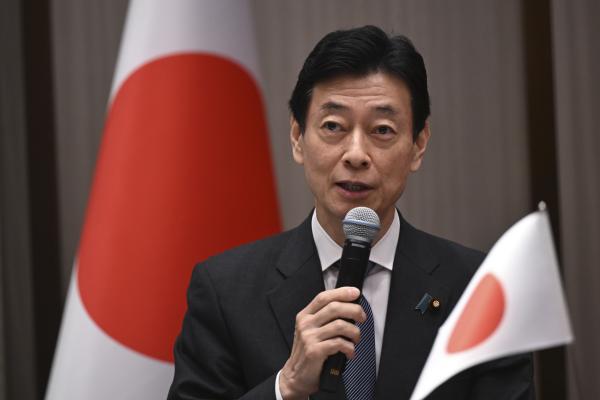
On January 20, Hudson Japan Chair Kenneth R. Weinstein will host Minister Yasutoshi Nishimura, former head of Japan’s Ministry of Economy, Trade and Industry (METI), for remarks on the Takaichi government’s economic security strategy.
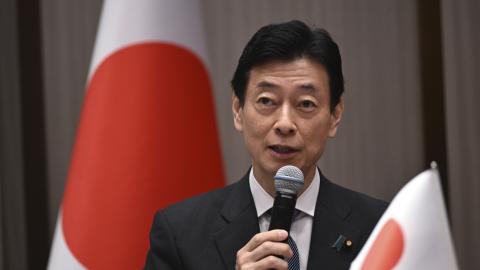
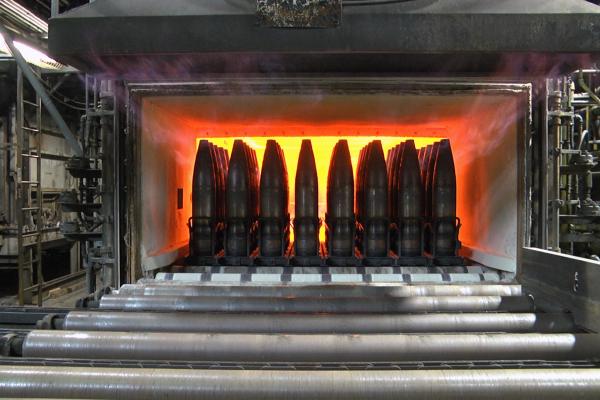
Join Hudson for a conversation with Assistant Secretary of War for Industrial Base Policy Michael Cadenazzi, who leads the DoW’s efforts to develop and maintain the US defense industrial base to secure critical national security supply chains.
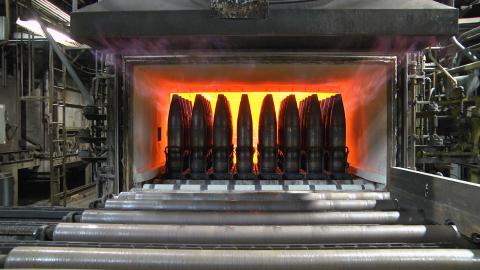
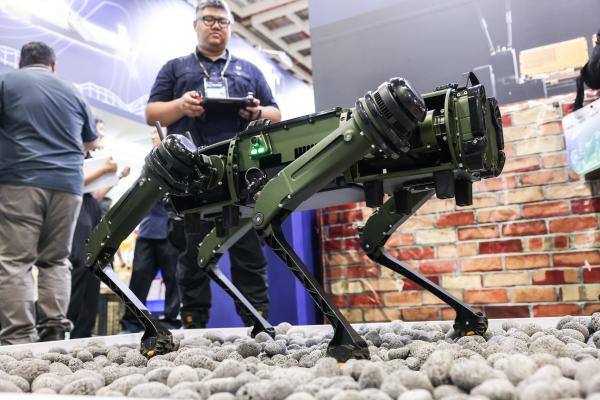
Join Hudson for a discussion with senior defense, industry, and policy leaders on how the US and Taiwan can advance collaborative models for codevelopment, coproduction, and supply chain integration.
